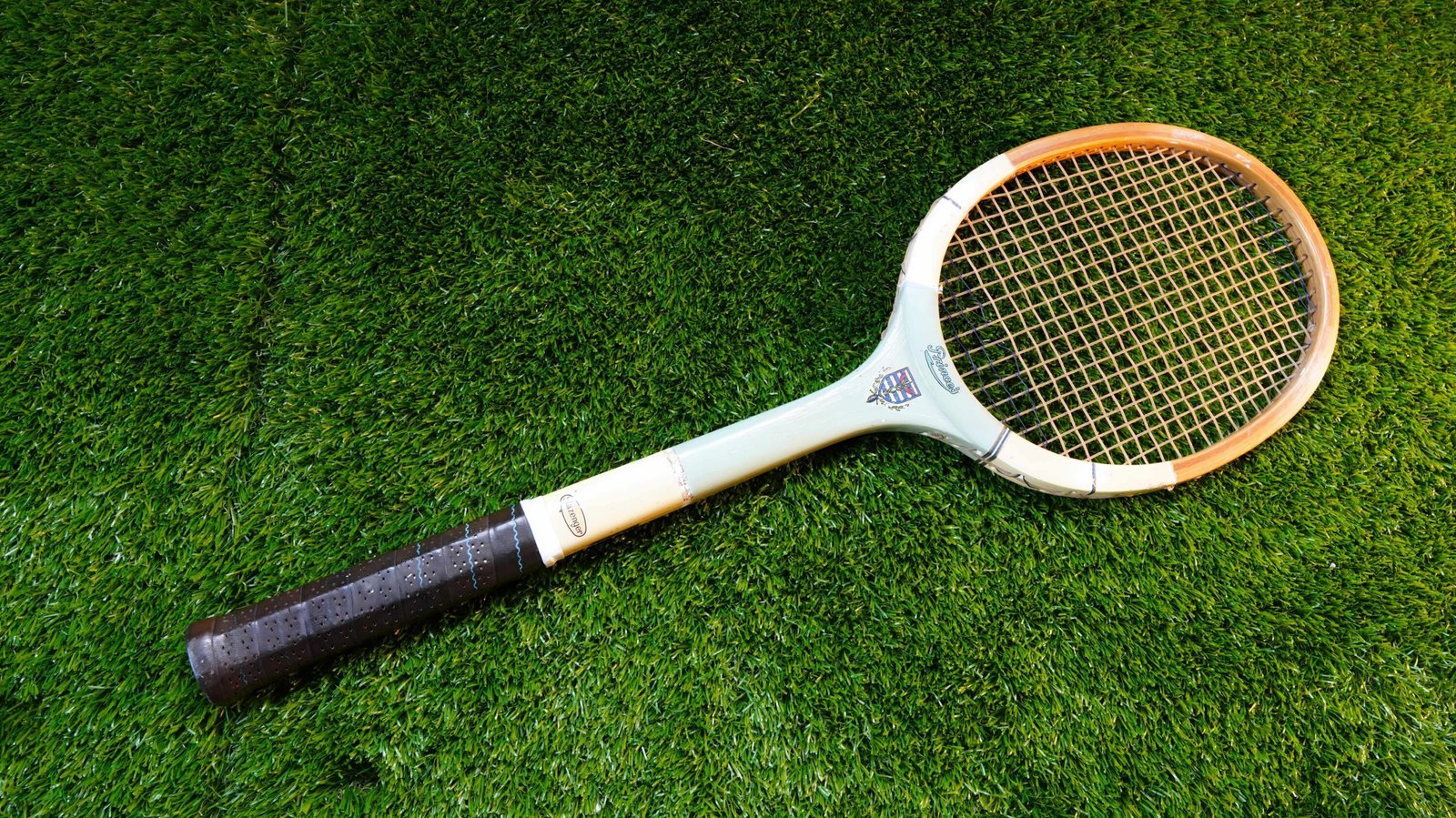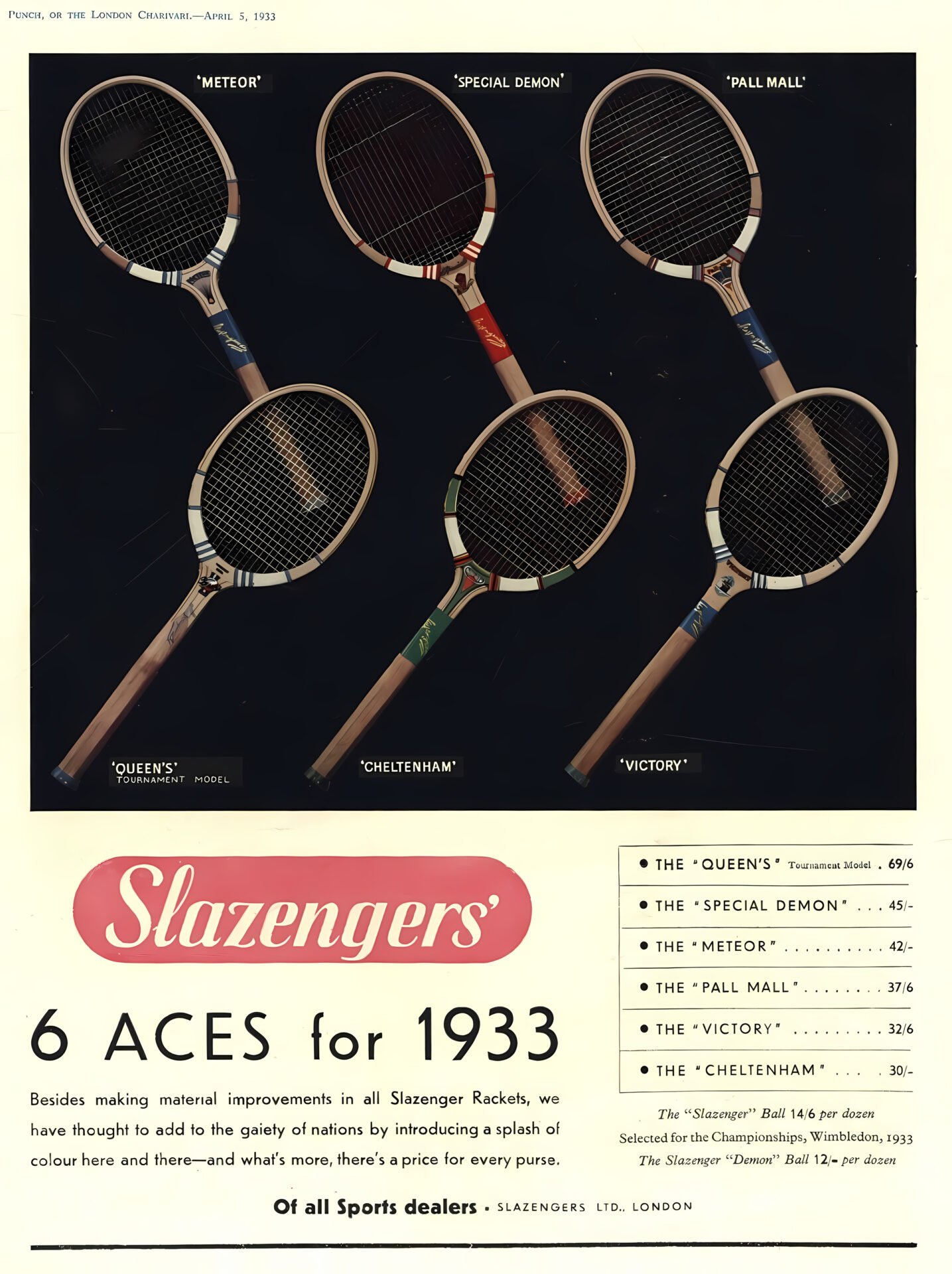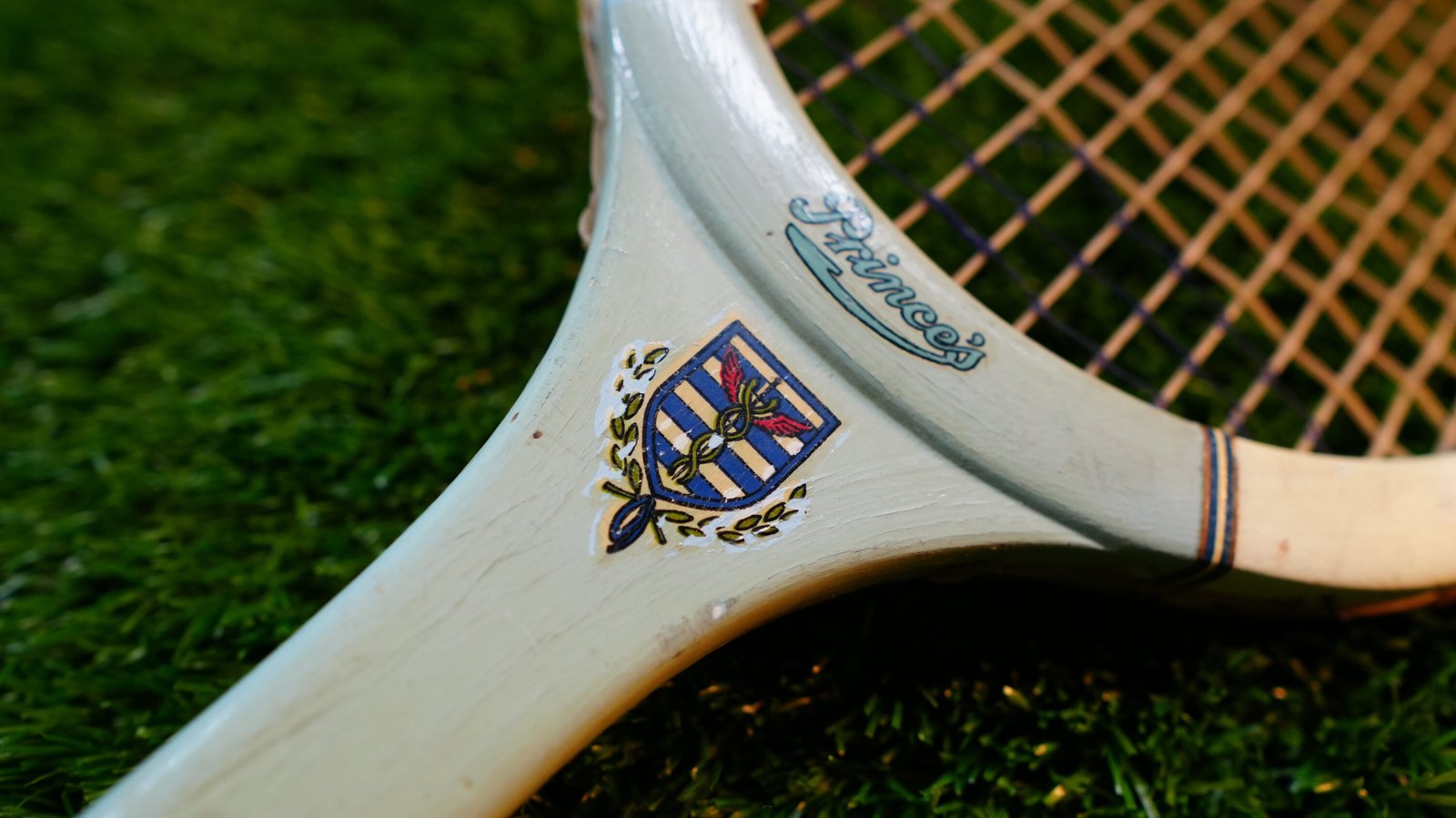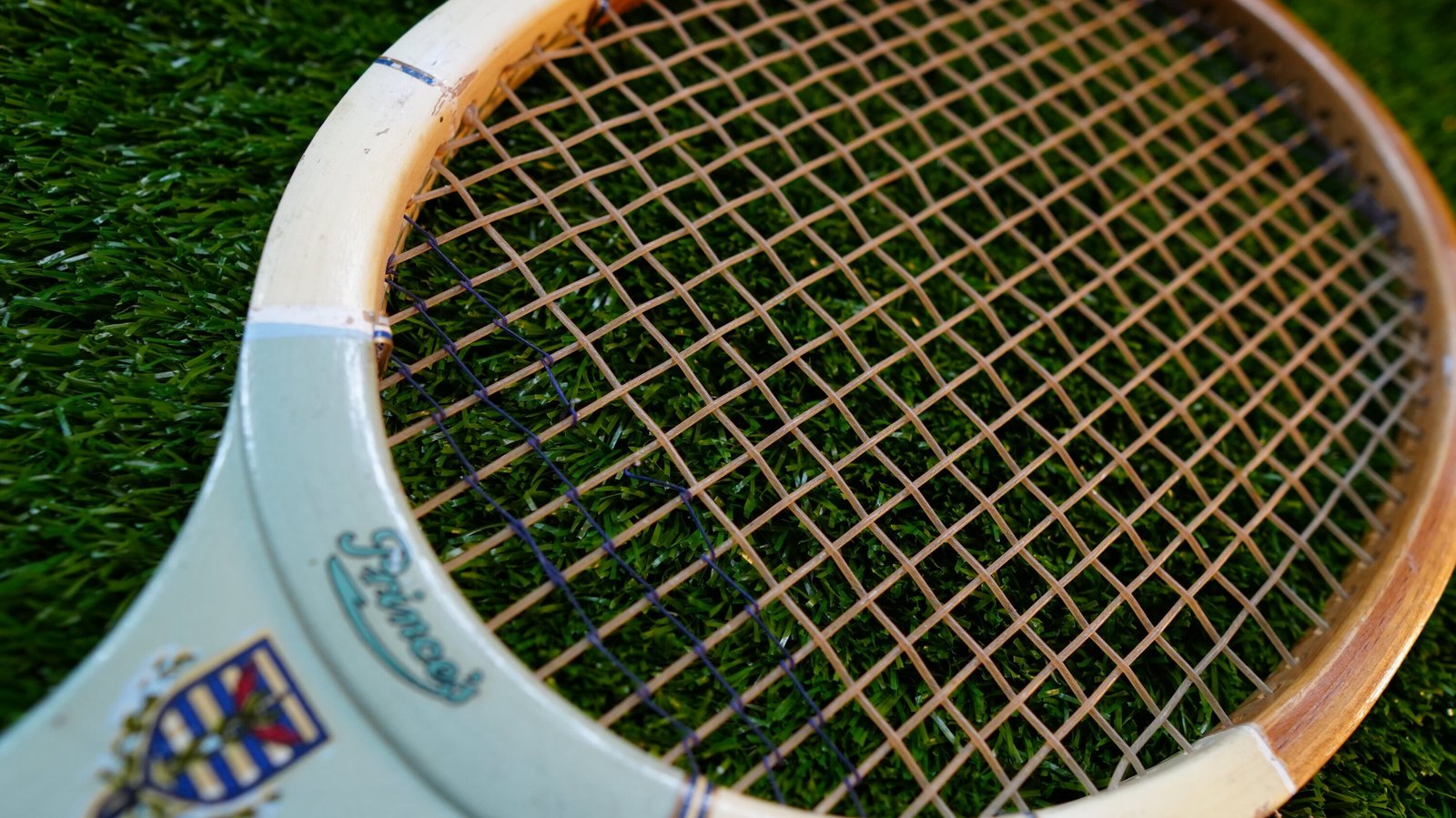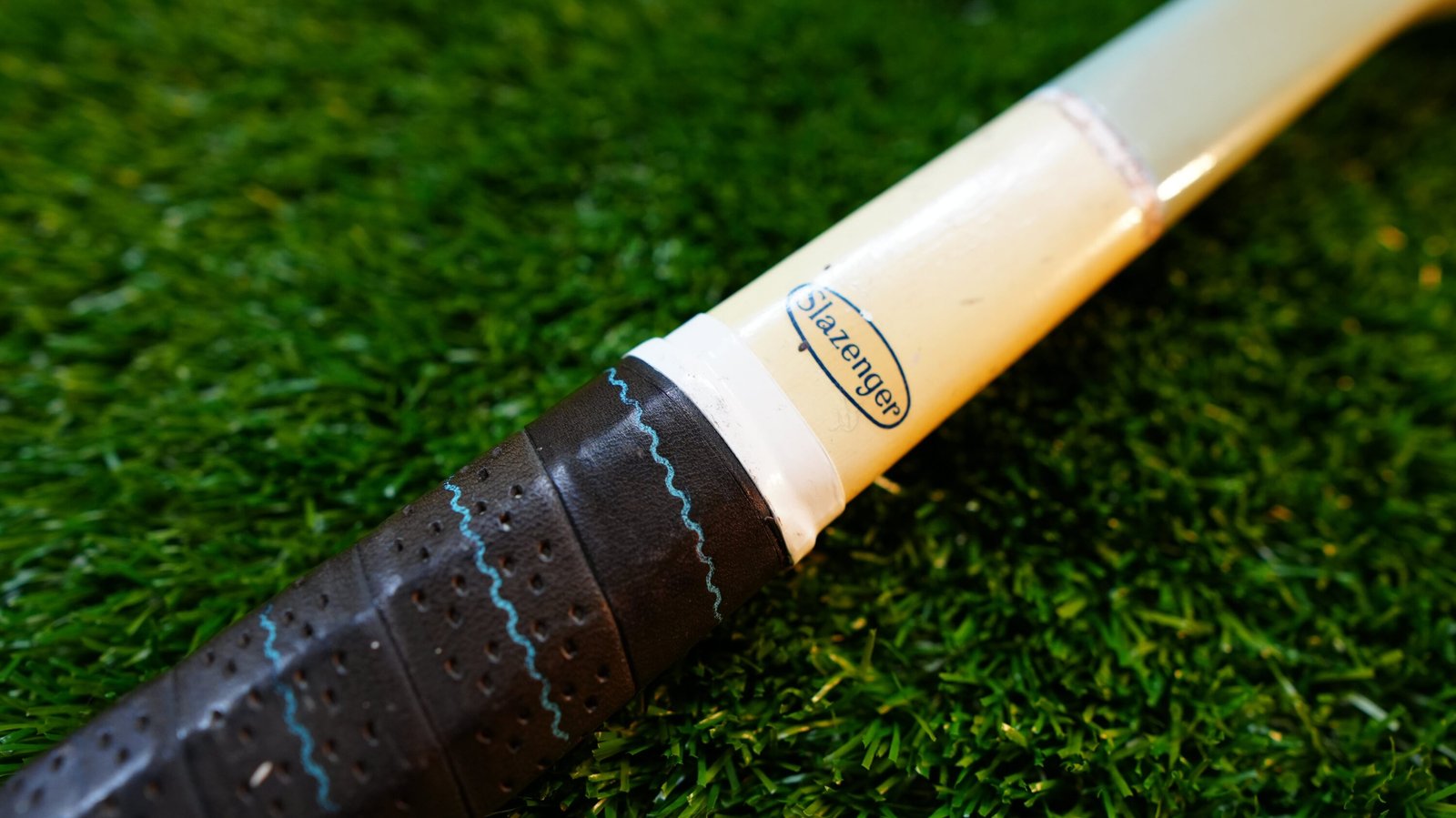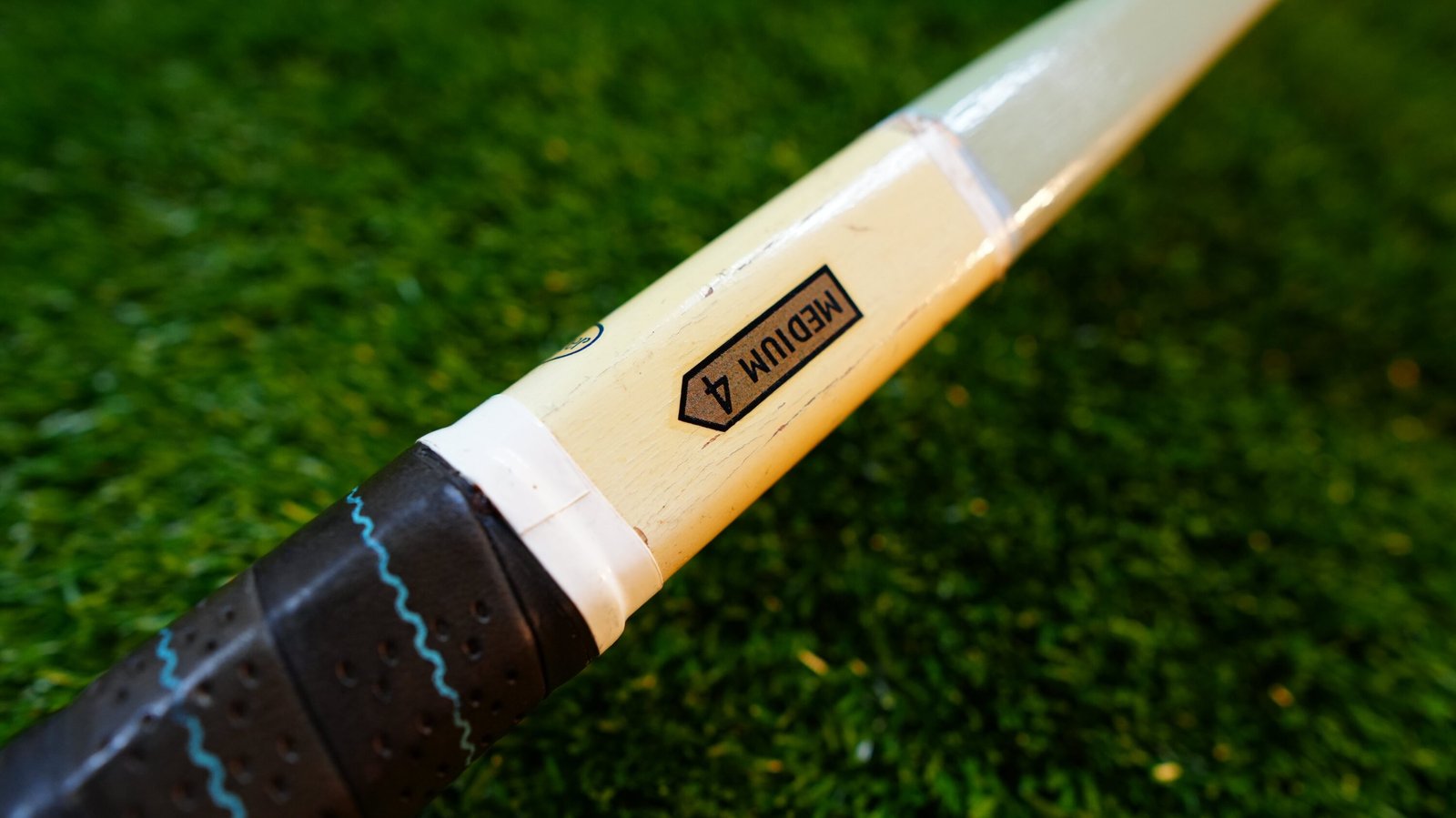Condition
6
10: New
9: Mint
8: Excellent
7: Good
6: Fair
5: Average
4: Below Average
3: Poor
|
Rarity
6
10: Impossibly rare
9: Extremely rare
8: Hard to find
7: Fairly rare
6: Uncommon
5: Common
<4: Big Seller
9: Mint
8: Excellent
7: Good
6: Fair
5: Average
4: Below Average
3: Poor
9: Extremely rare
8: Hard to find
7: Fairly rare
6: Uncommon
5: Common
<4: Big Seller
– – – – – – – – – – –
About This Racket
Slazenger’s early rackets included the Eltham (names after their home ground), Frinton, Invicta, Demon, Kings and Queens. The Queens was a big seller from 1925 through to the 1945. You can tell it is a big seller, if they made junior variants, even more so if they made mens and womens models. Neverthless the Queens was a quality racket for the day. I have an early 1929 model but this is the second rerfresh from 1950 painted white. This came with plain tan leather handle, blue tribling and early nylon string. I am ranking this 8 on rarity because of its junior status. This one has seen very little use!
Historic Gallery
Specifications (👋 not yet accurate….check back soon)
| Measurements | Value | Performance | Score |
|---|---|---|---|
| Weight | 394g | Power | 33/100 |
| Head Size & Length | 68sq in | 27inch | Control | 28/100 |
| Balance | 8pt head light (220) | Spin | 26/100 |
| Grip | Perforated leather | Handling | 30/100 |
| Strings | 18 x 20 | gut | Comfort | 49/100 |
| Flexibility | RA 49 | Consistency | 33/100 |
About Slazenger
The history of Slazenger is a significant and storied one, closely intertwined with the development and growth of tennis, as well as other sports, through its innovative equipment and strategic marketing. Starting in the mid-1880s, Slazenger UK branched out from its successful military clothing business to promote sporting goods, including tennis, cricket, and football equipment. The company quickly capitalized on the burgeoning popularity of tennis in the UK, producing boxed tennis sets and partnering with key players like William Renshaw, a six-time Wimbledon champion, to boost their brand. Slazenger’s tennis balls began production in 1877, but it wasn’t until 1902 that they became the official ball of Wimbledon, a partnership that has lasted over a century. The company expanded its reach internationally, notably to Australia, where it established a significant presence by the early 1900s. Slazenger opened an Australian factory in 1928 to manufacture rackets and later added cricket bat production. Despite setbacks like the 1932 factory fire and a devastating hailstorm in the late 1990s, Slazenger maintained its production and innovation in Australia. The company was known for its aggressive marketing strategies, including player endorsements and junior tennis development programs. This practice not only promoted their products but also helped maintain player fitness and visibility through exhibition matches. Slazenger’s investment in young talent paid off, particularly in the 1950s, with players like John Newcombe endorsing their products. In the 1930s, Slazenger introduced the “Floating Power” rackets, featuring mercury in the handle to enhance racket weight at the point of impact, a concept initially attempted in the UK in 1889. The company also experimented with unique designs like the famous “All White” racket used by Fred Perry in the 1934 Australian Championships. The post-war era saw the introduction of the “Challenge” racket, made from Canadian Ash, which became popular among club players until the mid-1970s. Despite fierce competition and technological advancements in racket materials in the 1980s, Slazenger maintained its reputation, particularly for its high-quality tennis balls. In 1958/59, Dunlop acquired Slazenger, allowing it to operate independently, and between 1960 and 1973, Slazenger rackets won a significant number of Grand Slam events. However, by the mid-1980s, racket production in Australia had ceased due to competitive pressures and the shift to manufacturing in Asia.
Gallery
Timeline of Slazenger
| YEAR | EVENT |
|---|---|
| 1877 | Slazenger tennis balls production begins. |
| 1881 | Ralph and Albert Slazenger establish a shop in London. |
| 1883 | Slazenger files a patent for a table tennis net. |
| 1885 | Slazenger begins promoting sporting goods. |
| 1889 | Captain Ralph Slazenger visits Australia. |
| 1902 | Slazenger becomes the official tennis ball supplier for Wimbledon. |
| 1910 | Slazenger and Sons becomes a public company. |
| 1928 | Slazenger opens an Australian factory in Sydney. |
| 1931 | Slazenger acquires H. Gradidge and Sons. |
| 1939 | Slazenger acquires William Sykes Ltd. |
| 1942 | Slazenger acquires F. H. Ayres. |
| 1940 | Slazenger factory bombed during the Blitz. |
| 1958 | Dunlop acquires Slazenger, allowing it to run independently. |
| 1959 | Ralph Slazenger Jr. sells the family business to Dunlop Rubber. |
| 1960-1973 | Slazenger racquets win 38 of 112 Grand Slam events. |
| 1965 | Slazenger Championship No.1 tennis racket launched. |
| 1980s | Rise of metal and composite tennis racquets. |
| Mid-1980s | Slazenger ceases racquet production in Australia. |
| 1985 | Dunlop Rubber purchased by BTR plc; forms Dunlop Slazenger Sports Group. |
| 1996 | BTR sells Dunlop Sport in a management buyout; new company named “Dunlop Slazenger”. |
| 2002 | Slazenger Barnsley plant closes; production moves to the Philippines. |
| 2004 | CINVen sells Dunlop Slazenger to Sports Direct International. |
